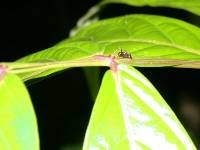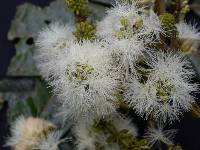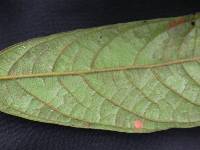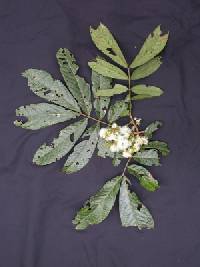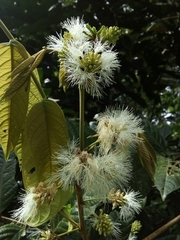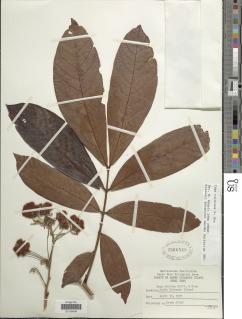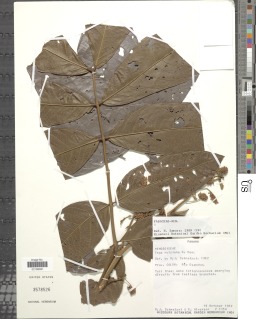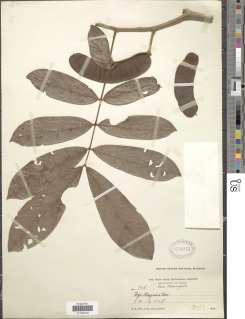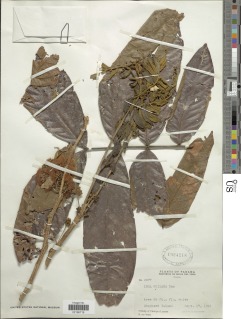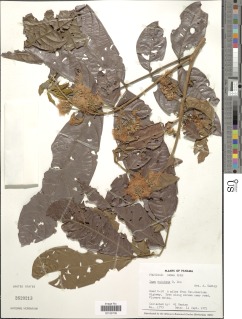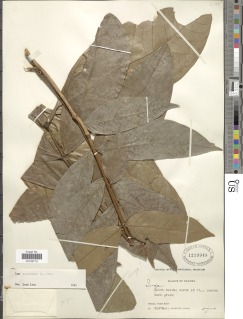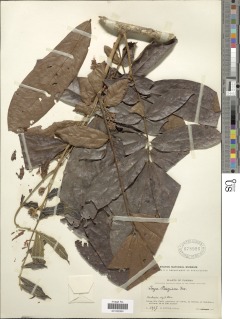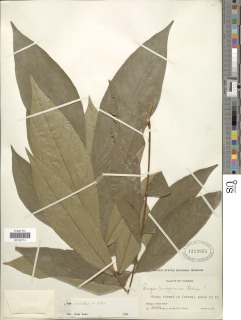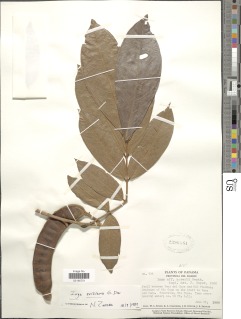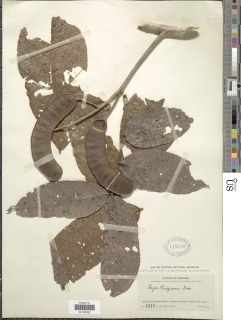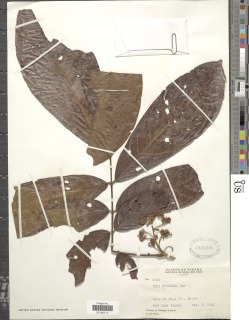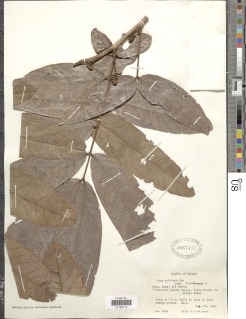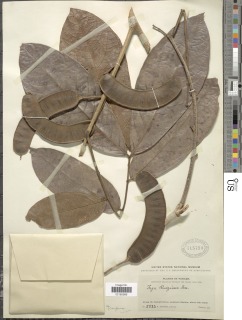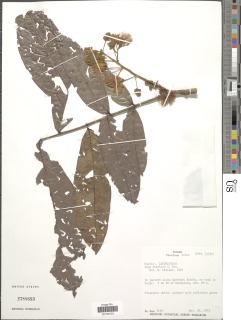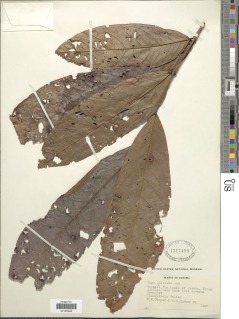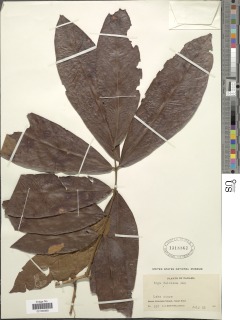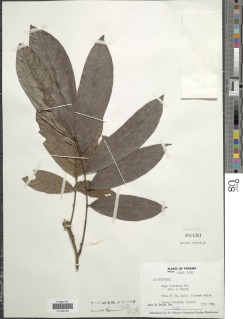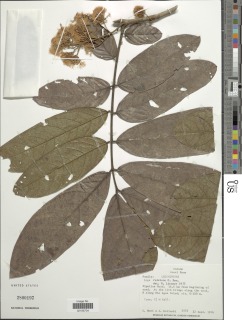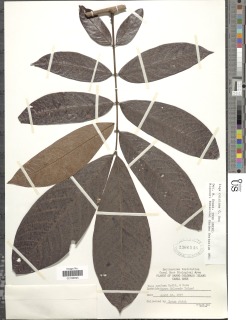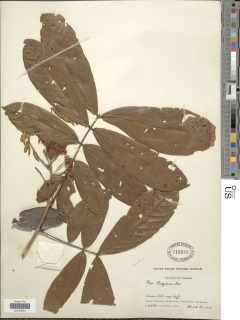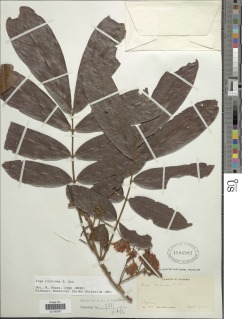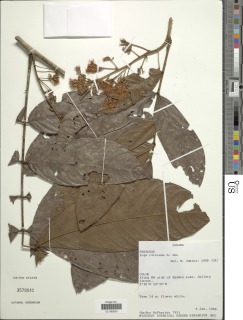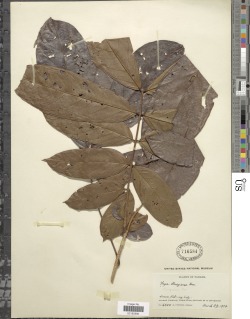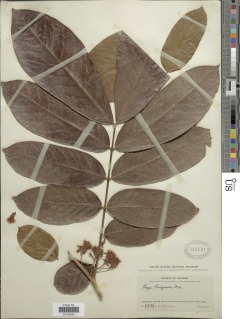

|
|
|
|
Family: Fabaceae
guabito, more...guabito cansa boca, guabo
[Inga confusa Britton & Rose, moreInga fagifolia (L.) Willd.] |
Description: A small or medium-sized tree with a straight, cylindrical trunk, often branched near the ground. Bark is gray or greenish, with lenticels. Leaves are alternate, compound, with 12-16 leaflets in opposite pairs and no terminal leaflet. Basal leaflets are smaller than outer leaflets. The rachis has a very narrow, green wing, below each leaflet pair, but not above. There is a round, flat gland on the rachis between each pair of leaflets. Except when very new, leaves are not pubescent. Reproduction: Flowers are pom-poms, as in all the Inga, with white stamen extending well beyond the floral tube, but smaller than in congeners. Produced from November to February, although occasionally at other times. Fruits are narrow green pods with black seeds within covered in a soft, pulpy aril. Distribution: Uncommon in the Canal area, only known within the forest at Barro Colorado Island and near Gamboa. Similar Species: Like all Inga, the rachis glands and paripinnate leaves are immediately distinctive. The closest congener in the area is LK ingaqu Inga nobilis, LK2 which has fewer and smaller leaflets. Some other legumes also have glands on the leaf rachis, and LK pit1ru Cojoba rufescens LK2 is a common tree that has leaflets quite similar to I. ruiziana; Cojoba leaflets are conspicuously undulate, though. At a glance, LK guargu Guarea guidonia LK2 in the Meliaceae looks like I. ruiziana, but it lacks rachis glands. Descripción: Árbol de 8 a 20 m de alto. Tronco recto y cilíndrico, ramificado a baja altura. Corteza exterior gris y lenticelada. Ramitas terminales cilíndricas y con lenticelas blancas. Hojas paripinnadas y alternas, con 6-8 pares de folíolos, opuestos en el raquis, los basales reducidos en tamaño. Folíolos de 3-30 x 3-12 cm, obovados a ovados, con ápice agudo o acuminado, bordes enteros y base obtusa. Las hojas generalmente presentan los folíolos pendulares o colgantes. Estípulas deciduas. Pecíolo cilíndrico o ligeramente cuadrangular y de 0.7-2 cm de largo. Raquis acanalado o a veces con pequeñas proyecciones aladas. Glándulas interfoliolares sésiles y en forma de copa. En las hojas jóvenes las glándulas son de color rojizo. Inflorescencias en espigas. Flores blancas y con estambres numerosos. Frutos en legumbres aplanadas, de 8-14 cm de largo, verdes, tornándose amarillentos al madurar. Datos Ecológicos: La especie crece a bajas elevaciones, en bosques húmedos o muy húmedos. En Panamá se encuentra en las provincias de Bocas del Toro, Chiriquí, Colón, Darién, Panamá y la comarca de Guna Yala. Común y fácil de observar en bosques ribereños del Canal de Panamá. Florece y fructifica durante todo el año, principalmente de septiembre a mayo. Las flores son visitadas por abejas, mariposas y otros insectos. Existen unas hormigas rojas que colectan las secreciones de las glándulas y defienden a la planta de los herbívoros. Especies Parecidas: A menudo se confunde con LK guargu Guarea guidonia LK2 , pero G. guidonia no presenta glándulas entre los folíolos. También se puede confundir con LK pit1ru Cojoba rufescens LK2 , pero en C. rufescens los frutos son legumbres rojas, torcidas y dehiscentes, muy diferente a los frutos de I. ruiziana. LK ingaqu Inga nobilis LK2 tiene hojas muy parecidas, pero los folíolos son de menor tamaño y no son pendulares y colgantes como ocurre en I. ruiziana. Usos: La madera es empleada para leña, cajas, entarimados y postes de cercas. El arilo blanco que cubre las semillas cuando los frutos están maduros es comestible. Los árboles de esta especie presentan un gran potencial como planta melífera en fincas dedicadas a la apicultura. Tree, to 9 (25) m tall; branchlets lenticellate, minutely ferruginous-pubescent, sometimes ribbed below petioles. Petiole and rachis unwinged, minutely margined, minutely pubescent; leaflets in (4) 6-7 (8) pairs, obovate-oblong to obovate, short-acuminate, obtuse to rounded at base, glabrate but with puberulent veins, the terminal pair 15-25 (34) cm long, 4.5-8 (12) cm wide. Spikes axillary (appearing paniculate on new growth) in groups of 1-4; peduncle and rachis tomentose; peduncles 1-2.5 (4.5) cm long; rachis 1-1.5 cm long; flowers dense, very short-pedicellate; bracts ca 1 mm long; pedicel and calyx sparsely pubescent; calyx 3-5 mm long, the lobes ca 0.5 mm long; corolla minutely, sparsely pubescent, 7-9 mm long, the lobes ca 1.5 mm long; stamens and style to 4 cm long. Legumes flat, minutely puberulent, curved slightly, to 16 cm long and 4 cm wide, the marginal ribs prominent. Croat 8436. Infrequent or rare; collected along the shore of Gigante Bay and the shore of Bat Cove. Seasonal behavior uncertain. Flowers from August to April, possibly with individuals flowering twice a year. Fruit maturity period not determined. Nicaragua to Peru and Brazil. In Panama, known from tropical moist forest in the Canal Zone, Bocas del Toro, Colón, Panama, and Darien. Tree, to 8 (23) m; calyx and axis of inflorescences puberulent, otherwise +/- glabrous. Leaves with (1) 2 or 3 pairs of leaflets; petioles terete to margined; rachis terete to narrowly winged; leaflets obovate to elliptic, retuse to obtuse or bluntly short-acuminate, acute and slightly inequilateral at base, the terminal pair 6-14 cm long, 3-6 cm wide. Spikes usually 1-5 in axils of terminal leaves; peduncles mostly 1-3 cm long; rachis mostly 4-9 cm long; bracts nearly obsolete, less than 1 mm long; flowers sessile; calyx tubular, 1-2 mm long, the teeth shallow, acute; corolla funnelform, 3-6 mm long, the lobes acute, ca 1 mm long, somewhat pubescent at apex; staminal tube included to long-exserted; stamens and style to ca 12 mm long. Legumes flat and ribbed to bulged in the middle with raised margins at maturity, mostly 7-15 cm long, 1.5-2.5 cm wide. Croat 5537, 6119. Mexico to Bolivia, Brazil, and Paraguay; Trinidad. In Panama, known from tropical moist forest in the Canal Zone, Veraguas, Herrera, Panama, and Darién, from tropical dry forest in Coclé (Penonomé), and from premontane wet forest in Panama (Cerro Azul). |
|
|
|


